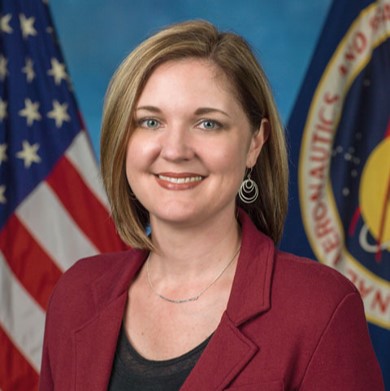Automation & Autonomy
-
Application
-
Pricing
Discount may apply
Course Price: $1,400 -
Schedule
Date: October 27 & November 3, 2023
Informational Workshop: September 15, 2023
Why This Course?
The energy industry, particularly offshore, is increasingly turning to remote operations to improve safety, efficiency, and sustainability while reducing costs. Autonomous robots are ideal for supporting remote operations as they can operate in hazardous environments and perform tasks from a distance. However, having an autonomous robot is just the first step – the mission and purpose must be clearly defined before the operation. Essential sensors are needed, and the software controlling the motion and making decisions must be integrated into the robot. Proper task planning and necessary support equipment, such as power and communication systems, are required, and the robot must undergo repeated testing before actual operations to eliminate potential issues. After all this, we can expect robots to perform reliable inspections and deliver quality data.
Understanding the pros and cons of autonomous robots, along with the full ecosystem of autonomous operation, is crucial for minimizing risk and ensuring profitable operations.
The Subsea Systems Institute (SSI), in collaboration with SPRINT Robotics, has developed an Automation and Autonomy course to promote autonomous robots in the energy industry. This course provides a comprehensive overview of autonomous robots, describes how autonomy is realized, and demonstrates how autonomous robots should be implemented. The course highlights include:
- An overview of autonomous robots and the latest developments in autonomy.
- Systematic discussion of the essential hardware and software components of an autonomous robot.
- The principles of autonomous navigation and localization, which are core techniques enabling robots to perform programmed operations without human control and supervision.
- Hands-on projects to provide participants with a practical understanding and learning experience.

Who should attend?
This course has been designed for energy industry personnel who fit the following:
- Individuals who are interested in autonomous robot technology but do not have a broad robotics background and specifically do not have a coding background.
- Engineers wishing to develop a deployment plan for inspection and knowledge-based autonomous robot technology.
- Technicians implementing and operating autonomous systems or maintaining robotic and other automation systems.
Learning Outcome
After successfully completing this module, participants should be able to:
- Familiar with the principles of autonomy for autonomous robots, including knowledge of software and hardware across multiple disciplines.
- Comprehend the resources and skills needed for autonomous robot deployment in the energy sector.
- Understand the advantages and disadvantages of autonomous robots and use them correctly and safely.
Pricing
Contact us for discount information.
COURSE PRICE:
$1,400
EACHCourse Overview
- Location: University of Houston-Clear Lake, Delta Building.
- Industry lectures from industry leaders or subject matter experts.
- Ten hours of hands-on activities using real robots. Assemble and control a mobile robot (Arduino robot). Program and test an autonomous robot (Turtlebot 4).
- Facility visit to see how the course material has been implemented by robots in industry. Facility visit: Nauticus Robotics, 17146 Feather Craft Ln #450, 77598
|
Day 1 |
|
|
Session 1 - Supervised Autonomy |
Dr. Kimberly Hambuchen, NASA JSC |
|
Session 2 - Electrical Foundation
|
Dr. Ishaq Unwala, UHCL |
|
Session 3 - Inspection Robot Product Development |
Dr. Robbie Edwards, Clearpath Robotics |
|
Session 4 - Robotic Software
|
Dr. Luong Nguyen, UHCLMiguel Pagan, UHCL |
|
Session 5 - SLAM Foundation
|
Dr. Luong Nguyen, UHCLMiguel Pagan, UHCL |
|
Day 2 |
|
|
Session 6 - Autonomy – Task Coordination |
Dr. John Yamokoski, Nauticus Robotics |
|
Session 7 - SLAM Implementation
|
Dr. Luong NguyenMiguel Pagan |
|
Session 8 - Principles of Autonomous Control
|
Dr. Luong Nguyen, UHCLDr. Aaron Becker, UHMiguel Pagan, UHCL |

Instructors

Dr. Kimberly Hambuchen
ER Deputy Division Chief, NASA Johnson Space Center

Dr. John Yamokoski
Chief Technology Officer, Nauticus Robotics

Dr. Robbie Edwards
Director of Technology, Clearpath Robotics

Dr. Aaron Becker
Associate Professor of Electrical and Computer Engineering, University of Houston

John Allen
Industry Liaison, Allen Energy Consultants, LLC (AEC)

Dr. Luong Nguyen
Associate Professor of Computer Engineering, College of Science and Engineering, University of Houston-Clear Lake

Dr. Ishaq Unwala
Associate Professor of Computer Engineering, College of Science and Engineering, University of Houston-Clear Lake

Miguel Pagan
Lecturer of Computer Engineering, College of Science and Engineering, University of Houston-Clear Lake
Crendentialing Overview
- A digital badge will be issued after successfully completing this course.
- Texas professional development hours and continuing education units available.